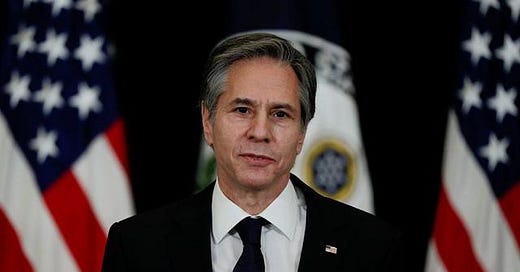Biden administration mulls freeze on Iran

As it consults with allies and members of Congress, the Biden administration is considering whether to pursue a more modest freeze with Iran as an interim step before trying to negotiate a possible return to the Iran nuclear deal, and then working with partners to try to negotiate a broader, longer deal.
“They are still thinking about options, and how quickly they can do everything,” a former Obama administration official familiar with current deliberations on the issue, and speaking not for attribution, said.
The approach to Iran was expected to be a central topic of discussion both at an NSC Principals Committee meeting held today, and in a call that Secretary of State Antony Blinken held with the foreign ministers of Britain, France and Germany today.
“I still think the intention is to get back to the JCPOA,” the former official continued, referring to the acronym for the formal name of the 2015 Iran nuclear deal, the Joint Comprehensive Plan of Action. “Is there a step along the way? They might be open to that. It might be smarter, if it leaves more space, and it might be easier to do.”
The administration is “flexible” and not wedded to a particular approach yet, he said.
The Biden administration has been cautious about discussing its thinking on Iran, emphasizing that it is consulting with allies, partners and Congress, in part out of sensitivity to Congress, especially as it still needs to get its nominees in place.
The thinking behind a more modest initial freeze for freeze proposal would be that it would buy time until they can start discussions about a timetable for mutual compliance.
Iran in recent months has resumed 20% enrichment, and enrichment at the underground Fordo facility, among other steps to protest the lack of sanctions relief it was entitled to under the 2015 Iran nuclear deal which former US President Trump quit in 2018.
Iran has also said that, if it has not seen progress on sanctions relief by February 21, it will cease voluntary implementation of the Additional Protocol, cutting off snap inspections of its nuclear program, in accordance with a new parliamentary law.
The administration’s objective is still to go back into full compliance, and they don’t want to start negotiating a JCPOA 2.0 until the limits in the current deal are fully restored, another person familiar with the administration deliberations described. But because of the difficulties of this moment, they are more likely than not to think about some sort of freeze, that would provide some limited sanctions relief if Iran freezes the more problematic aspects of its nuclear program. Then, in the time and space created as a result of this first step, they can start discussing coordinated steps on a JCPOA return.
It is not clear if Iran would accept such a proposal. But the Biden administration believes it has a better chance to pursue it if it does so as part of a joint and united position, ideally with the P5+1—the five permanent members of the UN Security Council plus Germany which negotiated the 2015 nuclear accord with Iran; or at least together with the three European parties (E3) to the deal, the UK, France and Germany.
Some arms control experts wondered why the administration would waste time pursuing interim measures rather than try to secure a clean mutual return to the deal.
“If Joe Biden wants Iran to return to compliance with the JCPOA, time is of the essence, because the Iranians are on a pretty firm course to blow through other key JCPOA obligations if the U.S. does not signal - and soon - that it is prepared to waive the JCPOA-related sanctions,” said Daryl Kimball, executive director of the Arms Control Association.


